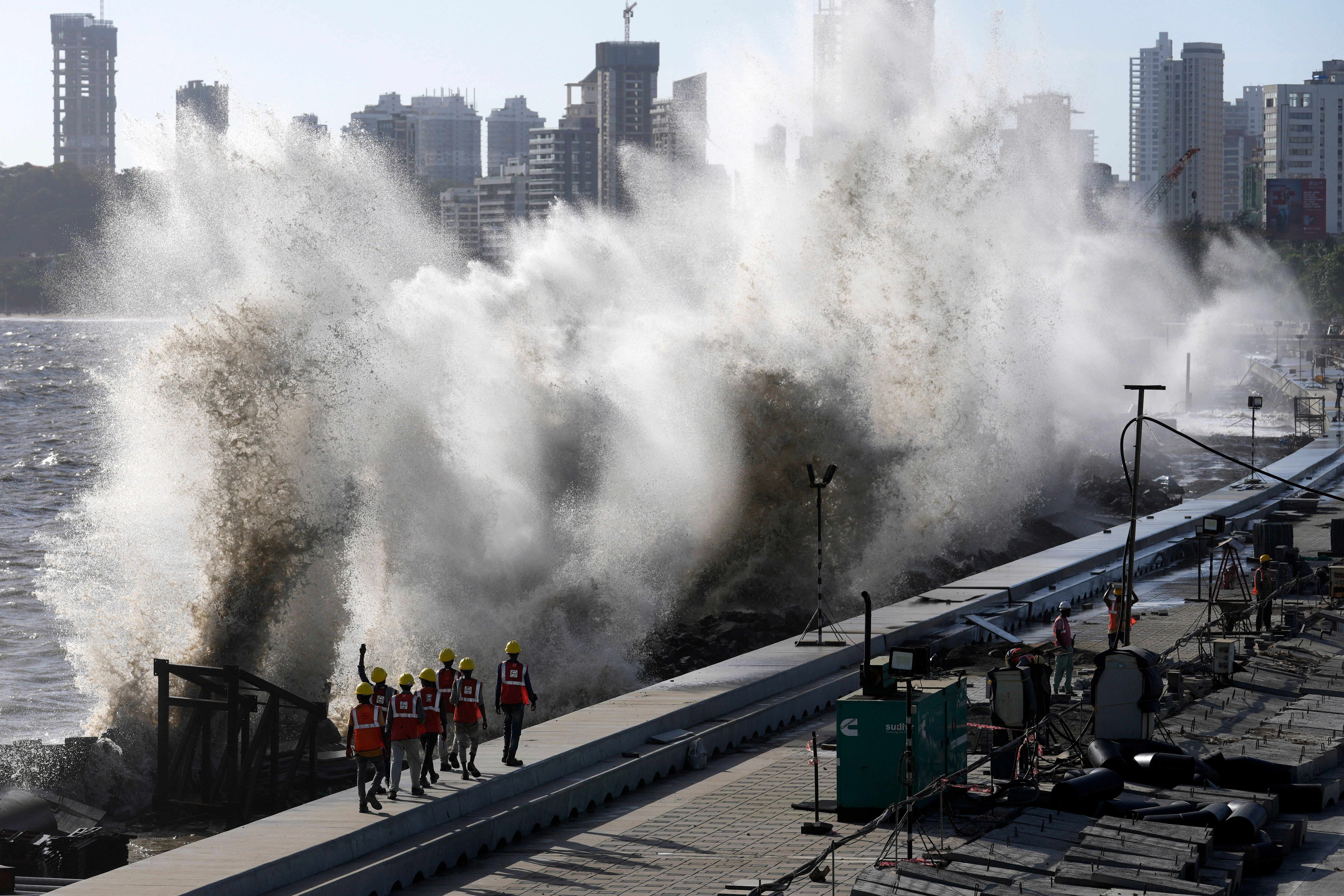India and Pakistan on high alert over ‘extremely severe’ cyclone Biparjoy
Pakistan’s financial capital Karachi and two of India’s largest ports, Mundra and Kandla, likely to be affected
Your support helps us to tell the story
From reproductive rights to climate change to Big Tech, The Independent is on the ground when the story is developing. Whether it's investigating the financials of Elon Musk's pro-Trump PAC or producing our latest documentary, 'The A Word', which shines a light on the American women fighting for reproductive rights, we know how important it is to parse out the facts from the messaging.
At such a critical moment in US history, we need reporters on the ground. Your donation allows us to keep sending journalists to speak to both sides of the story.
The Independent is trusted by Americans across the entire political spectrum. And unlike many other quality news outlets, we choose not to lock Americans out of our reporting and analysis with paywalls. We believe quality journalism should be available to everyone, paid for by those who can afford it.
Your support makes all the difference.An “extremely severe cyclone” is heading towards India and Pakistan this week, prompting high level alerts, evacuations and school closures.
Cyclone Biparjoy, the first severe storm of the year, is expected to hit the coastal regions of India and Pakistan on Thursday.
Originating from the Arabian Sea last week, the cyclone has already developed into an “extremely severe cyclonic storm”, the second highest category on the scale.
Biparjoy is predicted to target India’s western state of Gujarat and Pakistan’s southern Sindh province with a maximum sustained wind speed of 125-135kmph, gusting up to 150kmph, the India Meteorological Department (IMD) said on Monday.
Pakistan’s financial capital Karachi, and two of India’s largest ports, Mundra and Kandla, in Gujarat state are likely to be affected by the cyclone.
Authorities in both countries have taken precautionary measures, including evacuating coastal communities, halting fishing activities and deploying rescue personnel in preparation for the approaching storm.
On Monday, Indian prime minister Narendra Modi chaired a high-level meeting to review preparedness ahead of the storm.
The western state of Gujarat in India started evacuating people near the coasts on Monday and announced school holidays in several districts.
While in Pakistan, Sherry Rehman, the Minister for climate change and environmental coordination, announced that all relevant departments in Sindh and Balochistan provinces have been placed on high alert.
Disaster management personnel have been deployed to densely populated regions and cities that lie in the path of the cyclone.
Cyclone Biparjoy marks the first severe cyclone to hit Pakistan since the devastating floods of last year, which claimed the lives of 1,739 people and resulted in losses amounting to $30bn.
Various scientific assessments show that the increasing frequency and intensity of tropical cyclones is due to climate crisis. As the global average temperatures continue to increase, the oceans are warming more than usual, creating favourable conditions for more storms.
The overall ocean surface temperature on average has increased by 0.88C between the periods of 1850–1900, with 0.60C of this warming occurred since 1980, according to the United Nations’s top scientific body the Intergovernmental Panel on Climate Change (IPCC).
The ocean surface temperature is projected to increase by up to 2.8C before 2100 based on the current increase if greenhouse gas emissions are not reduced as fast as possible.
Recent studies also indicate a worrying warming in the Arabian Sea in recent months, with warming this year up by 1.2C since March and an increase of 1.2C to 1.4C recorded in recent decades.
The speed at which cyclones move has also decreased in the Arabian Sea as they become more intense, reports say, making cyclones more devastating as they result in rainfall for a longer period.
According to a research carried out by the Indian Institute of Tropical Meteorology (IITM), 52 per cent increase in cyclonic activities was noticed in the Arabian Sea within a period between 2001-2018.

Tropical cyclones are one of the most devastating natural disasters costing more than half a million lives all over the world in the last five decades.
The Indian Ocean region, including the Arabian Sea and the Bay of Bengal, is of particular concern because of the high population density along its coastlines.




Join our commenting forum
Join thought-provoking conversations, follow other Independent readers and see their replies
Comments